-
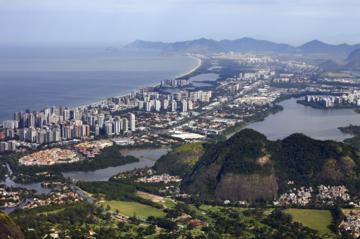 Barra da Tijuca
Barra da Tijuca Barra da Tijuca, often referred to simply as Barra, is one of Rio’s newest neighborhoods — evident by its mega malls and glass-towered condominiums. As one of the city’s more affluent neighborhoods, it’s also among the safest. Brazilians often refer to the neighborhood as the Brazi
Barra da Tijuca
Barra da Tijuca Barra da Tijuca, often referred to simply as Barra, is one of Rio’s newest neighborhoods — evident by its mega malls and glass-towered condominiums. As one of the city’s more affluent neighborhoods, it’s also among the safest. Brazilians often refer to the neighborhood as the Brazi
-
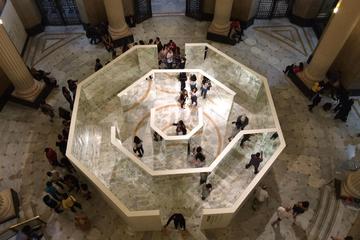 Bank of Brasil Cultural Center (Centro Cultural Banco do Brasil)
Bank of Brasil Cultural Center (Centro Cultural Banco do Brasil) Since 1986 Bank of Brasil Cultural Center has been showcasing an impressive collection of artwork that’s made it one of the top 100 most-visited art museums in the world. With more than two million visitors annually, the Rio de Janei
Bank of Brasil Cultural Center (Centro Cultural Banco do Brasil)
Bank of Brasil Cultural Center (Centro Cultural Banco do Brasil) Since 1986 Bank of Brasil Cultural Center has been showcasing an impressive collection of artwork that’s made it one of the top 100 most-visited art museums in the world. With more than two million visitors annually, the Rio de Janei
-
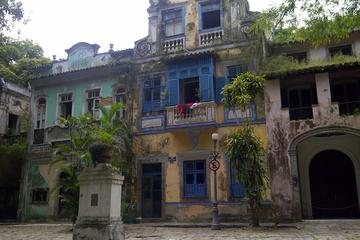 Bairro Cosme Velho
Bairro Cosme Velho The Cosme Velho neighborhood is best known as the jumping-off point to ascend Corcovado Mountain to Christ the Redeemer. Most visitors to Rio will set foot in this small, historic area on their way to the city’s most iconic attraction, but it’s worth it to explore beyond that. F
Bairro Cosme Velho
Bairro Cosme Velho The Cosme Velho neighborhood is best known as the jumping-off point to ascend Corcovado Mountain to Christ the Redeemer. Most visitors to Rio will set foot in this small, historic area on their way to the city’s most iconic attraction, but it’s worth it to explore beyond that. F
-
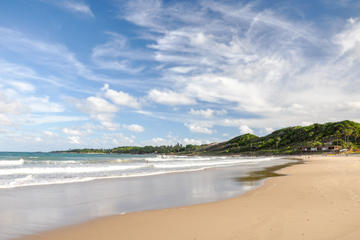 Baia Formosa
Baia Formosa Baia Formosa translates to “beautiful bay,” a fitting name for this scenic city in eastern Rio Grande do Norte, bordering the nearby state of Paraíba. It is a well-known South American surfing spot with areas for both beginning and advanced surfers. The central fishing village o
Baia Formosa
Baia Formosa Baia Formosa translates to “beautiful bay,” a fitting name for this scenic city in eastern Rio Grande do Norte, bordering the nearby state of Paraíba. It is a well-known South American surfing spot with areas for both beginning and advanced surfers. The central fishing village o
-
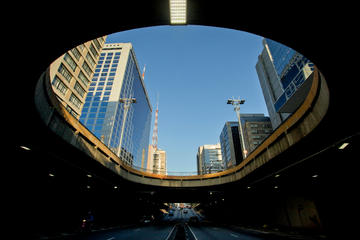 Avenida Paulista
Avenida Paulista One of the most expensive strips of real estate in Latin America, Avenida Paulista is São Paulo’s most iconic thoroughfare. What started out as a residential street lined with the ornate neoclassical mansions of 19th-century coffee barons has, in a little over a century, turned in
Avenida Paulista
Avenida Paulista One of the most expensive strips of real estate in Latin America, Avenida Paulista is São Paulo’s most iconic thoroughfare. What started out as a residential street lined with the ornate neoclassical mansions of 19th-century coffee barons has, in a little over a century, turned in
-
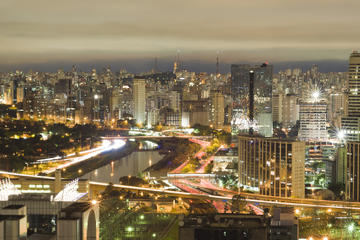 Avenida Berrini
Avenida Berrini Developed in the late 1970s as an off-price alternative to the sky-high rents along Avenida Paulista, Avenida Berrini (pronounced be-HEE-nee) has given its name to a district of modern high-rise office and residential towers which host the headquarters or regional offices of severa
Avenida Berrini
Avenida Berrini Developed in the late 1970s as an off-price alternative to the sky-high rents along Avenida Paulista, Avenida Berrini (pronounced be-HEE-nee) has given its name to a district of modern high-rise office and residential towers which host the headquarters or regional offices of severa
-
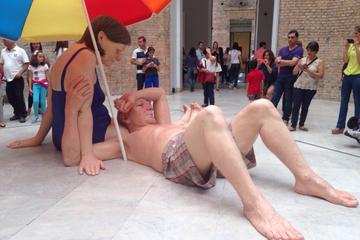 Art Gallery of the State of Sao Paulo (Pinacoteca do Estado)
Art Gallery of the State of Sao Paulo (Pinacoteca do Estado) One of Brazil’s most important art museums, the Art Gallery of the State of Sao Paulo (Pinacoteca do Estado) was founded in 1905. Dedicated to 19th- and 20th-century Brazilian art, there are over 8,000 pieces in the Pinacoteca collection
Art Gallery of the State of Sao Paulo (Pinacoteca do Estado)
Art Gallery of the State of Sao Paulo (Pinacoteca do Estado) One of Brazil’s most important art museums, the Art Gallery of the State of Sao Paulo (Pinacoteca do Estado) was founded in 1905. Dedicated to 19th- and 20th-century Brazilian art, there are over 8,000 pieces in the Pinacoteca collection
-
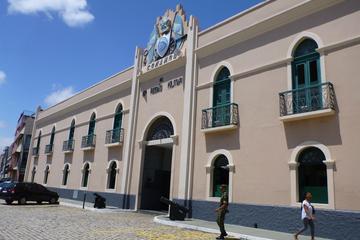 Nossa Senhora de Assuncao Fort
Nossa Senhora de Assuncao Fort The history of Nossa Senhora de Assuncao Fort dates back to 1649, when it was built by the Dutch under the direction of Captain Matias Beck as Forte Schoonemborch. Just five years later in 1654, the fort was captured by the Portuguese and renamed after the patron sai
Nossa Senhora de Assuncao Fort
Nossa Senhora de Assuncao Fort The history of Nossa Senhora de Assuncao Fort dates back to 1649, when it was built by the Dutch under the direction of Captain Matias Beck as Forte Schoonemborch. Just five years later in 1654, the fort was captured by the Portuguese and renamed after the patron sai
-
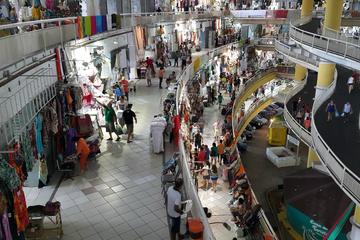 Mercado Central
Mercado Central Like many northeastern Brazilian cities, Fortaleza is famous for its handicrafts, particularly its embroidered white lace textiles. One of the best places in the city to pick up locally made gifts and souvenirs is at the Mercado Central. The market got its start as a meat, fru
Mercado Central
Mercado Central Like many northeastern Brazilian cities, Fortaleza is famous for its handicrafts, particularly its embroidered white lace textiles. One of the best places in the city to pick up locally made gifts and souvenirs is at the Mercado Central. The market got its start as a meat, fru
-
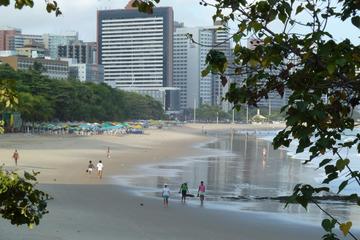 Meireles Beach
Meireles Beach The Brazilian state of Ceara is famous for its long coastline and numerous beaches. In the city of Fortaleza, Meireles Beach is one of the busiest stretches of coast, packed with the highest concentration of hotels and seaside restaurants serving up traditional Brazilian food and dr
Meireles Beach
Meireles Beach The Brazilian state of Ceara is famous for its long coastline and numerous beaches. In the city of Fortaleza, Meireles Beach is one of the busiest stretches of coast, packed with the highest concentration of hotels and seaside restaurants serving up traditional Brazilian food and dr
-
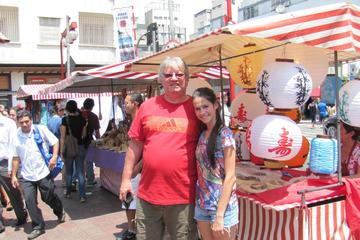 Liberdade
Liberdade Home to the world’s largest Japanese population outside Japan, the Sao Paulo district of Liberdade is a densely-populated neighborhood that’s a popular spot for locals and tourists looking to get a taste of Japanese culture and cuisine in Brazil.Liberdade was settled in the early to mid-
Liberdade
Liberdade Home to the world’s largest Japanese population outside Japan, the Sao Paulo district of Liberdade is a densely-populated neighborhood that’s a popular spot for locals and tourists looking to get a taste of Japanese culture and cuisine in Brazil.Liberdade was settled in the early to mid-
-
 Museu do Seringal Vila Paraíso (Rubber Museum)
Museu do Seringal Vila Paraíso (Rubber Museum) Located on the site of a former rubber estate, the Museu do Seringal Vila Paraíso (Rubber Museum) is the last vestige of the Amazon’s once booming rubber industry, which brought an influx of riches to Manaus during the late 19th century. Marooned on t
Museu do Seringal Vila Paraíso (Rubber Museum)
Museu do Seringal Vila Paraíso (Rubber Museum) Located on the site of a former rubber estate, the Museu do Seringal Vila Paraíso (Rubber Museum) is the last vestige of the Amazon’s once booming rubber industry, which brought an influx of riches to Manaus during the late 19th century. Marooned on t
-
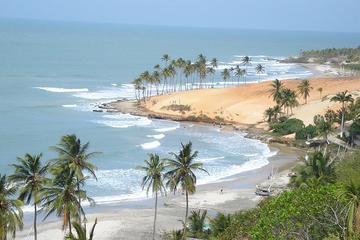 Lagoinha Beach
Lagoinha Beach Half-moon shaped Lagoinha Beach is a stunning beach that was once a favorite hiding place for pirates. It has a reputation as being the most beautiful beach in the state and its good looks are intensified by its tranquility, being far enough away from Fortaleza to escape the crowds.
Lagoinha Beach
Lagoinha Beach Half-moon shaped Lagoinha Beach is a stunning beach that was once a favorite hiding place for pirates. It has a reputation as being the most beautiful beach in the state and its good looks are intensified by its tranquility, being far enough away from Fortaleza to escape the crowds.
-
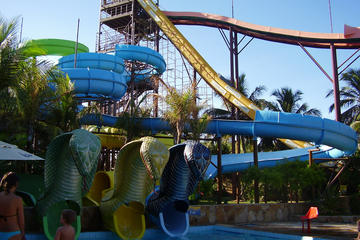 Fortaleza Beach Park
Fortaleza Beach Park The Fortaleza Beach Park complex is on Fortalezas coast. Its main attraction is its enormous Aqua Park, with waterslides, waterfalls, and an artificial river, although you can choose to base yourself at one of the Parks on-site hotels. The complex is a combination of resort,
Fortaleza Beach Park
Fortaleza Beach Park The Fortaleza Beach Park complex is on Fortalezas coast. Its main attraction is its enormous Aqua Park, with waterslides, waterfalls, and an artificial river, although you can choose to base yourself at one of the Parks on-site hotels. The complex is a combination of resort,
-
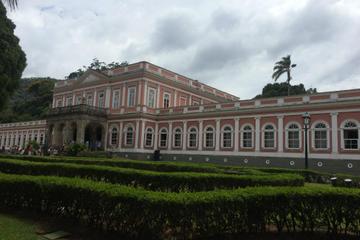 Imperial Museum
Imperial Museum Located smack in the center of Petrópolis—the regal mountain town about an hour north of central Rio de Janeiro—the Imperial Museum offers fascinating insight to the lives of Brazilian royalty. Constructed in the middle of the 19th century as a summer home for Pedro I, the Imperial
Imperial Museum
Imperial Museum Located smack in the center of Petrópolis—the regal mountain town about an hour north of central Rio de Janeiro—the Imperial Museum offers fascinating insight to the lives of Brazilian royalty. Constructed in the middle of the 19th century as a summer home for Pedro I, the Imperial
-
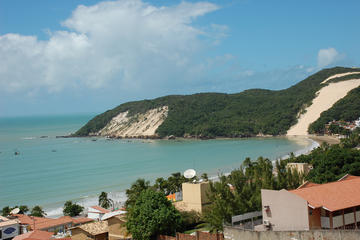 Ponta Negra
Ponta Negra South of the city, Ponta Negra is one of Natal’s most accessible beaches and fills up with locals on the weekends. It’s a popular spot year-round and has seen a fair amount of development along its 3km (1.8mi) stretch. Its northern end has a pedestrian-only boardwalk and a few large re
Ponta Negra
Ponta Negra South of the city, Ponta Negra is one of Natal’s most accessible beaches and fills up with locals on the weekends. It’s a popular spot year-round and has seen a fair amount of development along its 3km (1.8mi) stretch. Its northern end has a pedestrian-only boardwalk and a few large re
-
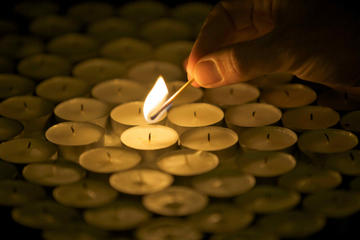 Metropolitan Cathedral
Metropolitan Cathedral Natal’s Metropolitan Cathedral was recently restored and is decidedly modern, making for an interesting stop in the city and an architectural landmark worth seeing. Its jagged shape and use of stained glass and light are departures from traditional cathedral design. Three in
Metropolitan Cathedral
Metropolitan Cathedral Natal’s Metropolitan Cathedral was recently restored and is decidedly modern, making for an interesting stop in the city and an architectural landmark worth seeing. Its jagged shape and use of stained glass and light are departures from traditional cathedral design. Three in
-
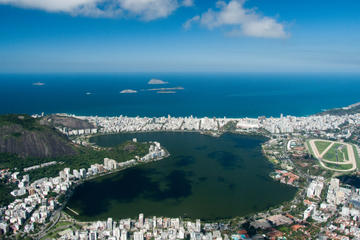 Rodrigo de Freitas Lagoon
Rodrigo de Freitas Lagoon Situated at the heart of Zona Sul and all but completely separated from the Atlantic Ocean by the upscale district of Ipanema, Rodrigo de Freitas Lake has been among Rio’s most distinguishing natural landmarks since the city was first established in the 16th century. In t
Rodrigo de Freitas Lagoon
Rodrigo de Freitas Lagoon Situated at the heart of Zona Sul and all but completely separated from the Atlantic Ocean by the upscale district of Ipanema, Rodrigo de Freitas Lake has been among Rio’s most distinguishing natural landmarks since the city was first established in the 16th century. In t
-
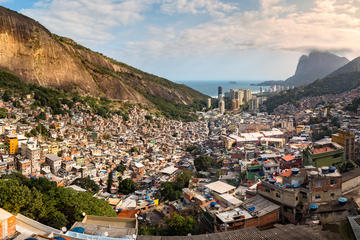 Rocinha
Rocinha A city within a city, Rocinha is Rio de Janeiro’s largest and most densely populated urban slum, or favela. Pouring down a hillside in the city’s South Zone, Rocinha is home to an estimated 180,000 residents, all crammed into its colorful maze of cement buildings and makeshift shanties. In
Rocinha
Rocinha A city within a city, Rocinha is Rio de Janeiro’s largest and most densely populated urban slum, or favela. Pouring down a hillside in the city’s South Zone, Rocinha is home to an estimated 180,000 residents, all crammed into its colorful maze of cement buildings and makeshift shanties. In
-
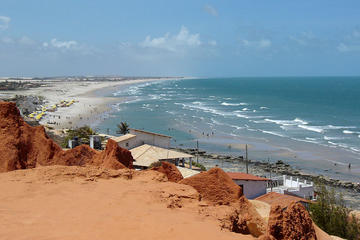 Morro Branco
Morro Branco Morro Branco’s red colored cliffs are an easy day trip from Fortaleza. While looking strikingly red from a distance (particularly when contrasted with the surrounding white dunes), when explored up close, you can see that the sand cliffs have a number of pink, cream and beige colored
Morro Branco
Morro Branco Morro Branco’s red colored cliffs are an easy day trip from Fortaleza. While looking strikingly red from a distance (particularly when contrasted with the surrounding white dunes), when explored up close, you can see that the sand cliffs have a number of pink, cream and beige colored
Total
1166 -travel
FirstPage PreviousPage NextPage LastPage CurrentPage:
7/59 20-travel/Page GoTo Page:
 Barra da Tijuca
Barra da Tijuca Barra da Tijuca, often referred to simply as Barra, is one of Rio’s newest neighborhoods — evident by its mega malls and glass-towered condominiums. As one of the city’s more affluent neighborhoods, it’s also among the safest. Brazilians often refer to the neighborhood as the Brazi
Barra da Tijuca
Barra da Tijuca Barra da Tijuca, often referred to simply as Barra, is one of Rio’s newest neighborhoods — evident by its mega malls and glass-towered condominiums. As one of the city’s more affluent neighborhoods, it’s also among the safest. Brazilians often refer to the neighborhood as the Brazi
 Bank of Brasil Cultural Center (Centro Cultural Banco do Brasil)
Bank of Brasil Cultural Center (Centro Cultural Banco do Brasil) Since 1986 Bank of Brasil Cultural Center has been showcasing an impressive collection of artwork that’s made it one of the top 100 most-visited art museums in the world. With more than two million visitors annually, the Rio de Janei
Bank of Brasil Cultural Center (Centro Cultural Banco do Brasil)
Bank of Brasil Cultural Center (Centro Cultural Banco do Brasil) Since 1986 Bank of Brasil Cultural Center has been showcasing an impressive collection of artwork that’s made it one of the top 100 most-visited art museums in the world. With more than two million visitors annually, the Rio de Janei
 Bairro Cosme Velho
Bairro Cosme Velho The Cosme Velho neighborhood is best known as the jumping-off point to ascend Corcovado Mountain to Christ the Redeemer. Most visitors to Rio will set foot in this small, historic area on their way to the city’s most iconic attraction, but it’s worth it to explore beyond that. F
Bairro Cosme Velho
Bairro Cosme Velho The Cosme Velho neighborhood is best known as the jumping-off point to ascend Corcovado Mountain to Christ the Redeemer. Most visitors to Rio will set foot in this small, historic area on their way to the city’s most iconic attraction, but it’s worth it to explore beyond that. F
 Baia Formosa
Baia Formosa Baia Formosa translates to “beautiful bay,” a fitting name for this scenic city in eastern Rio Grande do Norte, bordering the nearby state of Paraíba. It is a well-known South American surfing spot with areas for both beginning and advanced surfers. The central fishing village o
Baia Formosa
Baia Formosa Baia Formosa translates to “beautiful bay,” a fitting name for this scenic city in eastern Rio Grande do Norte, bordering the nearby state of Paraíba. It is a well-known South American surfing spot with areas for both beginning and advanced surfers. The central fishing village o
 Avenida Paulista
Avenida Paulista One of the most expensive strips of real estate in Latin America, Avenida Paulista is São Paulo’s most iconic thoroughfare. What started out as a residential street lined with the ornate neoclassical mansions of 19th-century coffee barons has, in a little over a century, turned in
Avenida Paulista
Avenida Paulista One of the most expensive strips of real estate in Latin America, Avenida Paulista is São Paulo’s most iconic thoroughfare. What started out as a residential street lined with the ornate neoclassical mansions of 19th-century coffee barons has, in a little over a century, turned in
 Avenida Berrini
Avenida Berrini Developed in the late 1970s as an off-price alternative to the sky-high rents along Avenida Paulista, Avenida Berrini (pronounced be-HEE-nee) has given its name to a district of modern high-rise office and residential towers which host the headquarters or regional offices of severa
Avenida Berrini
Avenida Berrini Developed in the late 1970s as an off-price alternative to the sky-high rents along Avenida Paulista, Avenida Berrini (pronounced be-HEE-nee) has given its name to a district of modern high-rise office and residential towers which host the headquarters or regional offices of severa
 Art Gallery of the State of Sao Paulo (Pinacoteca do Estado)
Art Gallery of the State of Sao Paulo (Pinacoteca do Estado) One of Brazil’s most important art museums, the Art Gallery of the State of Sao Paulo (Pinacoteca do Estado) was founded in 1905. Dedicated to 19th- and 20th-century Brazilian art, there are over 8,000 pieces in the Pinacoteca collection
Art Gallery of the State of Sao Paulo (Pinacoteca do Estado)
Art Gallery of the State of Sao Paulo (Pinacoteca do Estado) One of Brazil’s most important art museums, the Art Gallery of the State of Sao Paulo (Pinacoteca do Estado) was founded in 1905. Dedicated to 19th- and 20th-century Brazilian art, there are over 8,000 pieces in the Pinacoteca collection
 Nossa Senhora de Assuncao Fort
Nossa Senhora de Assuncao Fort The history of Nossa Senhora de Assuncao Fort dates back to 1649, when it was built by the Dutch under the direction of Captain Matias Beck as Forte Schoonemborch. Just five years later in 1654, the fort was captured by the Portuguese and renamed after the patron sai
Nossa Senhora de Assuncao Fort
Nossa Senhora de Assuncao Fort The history of Nossa Senhora de Assuncao Fort dates back to 1649, when it was built by the Dutch under the direction of Captain Matias Beck as Forte Schoonemborch. Just five years later in 1654, the fort was captured by the Portuguese and renamed after the patron sai
 Mercado Central
Mercado Central Like many northeastern Brazilian cities, Fortaleza is famous for its handicrafts, particularly its embroidered white lace textiles. One of the best places in the city to pick up locally made gifts and souvenirs is at the Mercado Central. The market got its start as a meat, fru
Mercado Central
Mercado Central Like many northeastern Brazilian cities, Fortaleza is famous for its handicrafts, particularly its embroidered white lace textiles. One of the best places in the city to pick up locally made gifts and souvenirs is at the Mercado Central. The market got its start as a meat, fru
 Meireles Beach
Meireles Beach The Brazilian state of Ceara is famous for its long coastline and numerous beaches. In the city of Fortaleza, Meireles Beach is one of the busiest stretches of coast, packed with the highest concentration of hotels and seaside restaurants serving up traditional Brazilian food and dr
Meireles Beach
Meireles Beach The Brazilian state of Ceara is famous for its long coastline and numerous beaches. In the city of Fortaleza, Meireles Beach is one of the busiest stretches of coast, packed with the highest concentration of hotels and seaside restaurants serving up traditional Brazilian food and dr
 Liberdade
Liberdade Home to the world’s largest Japanese population outside Japan, the Sao Paulo district of Liberdade is a densely-populated neighborhood that’s a popular spot for locals and tourists looking to get a taste of Japanese culture and cuisine in Brazil.Liberdade was settled in the early to mid-
Liberdade
Liberdade Home to the world’s largest Japanese population outside Japan, the Sao Paulo district of Liberdade is a densely-populated neighborhood that’s a popular spot for locals and tourists looking to get a taste of Japanese culture and cuisine in Brazil.Liberdade was settled in the early to mid-
 Museu do Seringal Vila Paraíso (Rubber Museum)
Museu do Seringal Vila Paraíso (Rubber Museum) Located on the site of a former rubber estate, the Museu do Seringal Vila Paraíso (Rubber Museum) is the last vestige of the Amazon’s once booming rubber industry, which brought an influx of riches to Manaus during the late 19th century. Marooned on t
Museu do Seringal Vila Paraíso (Rubber Museum)
Museu do Seringal Vila Paraíso (Rubber Museum) Located on the site of a former rubber estate, the Museu do Seringal Vila Paraíso (Rubber Museum) is the last vestige of the Amazon’s once booming rubber industry, which brought an influx of riches to Manaus during the late 19th century. Marooned on t
 Lagoinha Beach
Lagoinha Beach Half-moon shaped Lagoinha Beach is a stunning beach that was once a favorite hiding place for pirates. It has a reputation as being the most beautiful beach in the state and its good looks are intensified by its tranquility, being far enough away from Fortaleza to escape the crowds.
Lagoinha Beach
Lagoinha Beach Half-moon shaped Lagoinha Beach is a stunning beach that was once a favorite hiding place for pirates. It has a reputation as being the most beautiful beach in the state and its good looks are intensified by its tranquility, being far enough away from Fortaleza to escape the crowds.
 Fortaleza Beach Park
Fortaleza Beach Park The Fortaleza Beach Park complex is on Fortalezas coast. Its main attraction is its enormous Aqua Park, with waterslides, waterfalls, and an artificial river, although you can choose to base yourself at one of the Parks on-site hotels. The complex is a combination of resort,
Fortaleza Beach Park
Fortaleza Beach Park The Fortaleza Beach Park complex is on Fortalezas coast. Its main attraction is its enormous Aqua Park, with waterslides, waterfalls, and an artificial river, although you can choose to base yourself at one of the Parks on-site hotels. The complex is a combination of resort,
 Imperial Museum
Imperial Museum Located smack in the center of Petrópolis—the regal mountain town about an hour north of central Rio de Janeiro—the Imperial Museum offers fascinating insight to the lives of Brazilian royalty. Constructed in the middle of the 19th century as a summer home for Pedro I, the Imperial
Imperial Museum
Imperial Museum Located smack in the center of Petrópolis—the regal mountain town about an hour north of central Rio de Janeiro—the Imperial Museum offers fascinating insight to the lives of Brazilian royalty. Constructed in the middle of the 19th century as a summer home for Pedro I, the Imperial
 Ponta Negra
Ponta Negra South of the city, Ponta Negra is one of Natal’s most accessible beaches and fills up with locals on the weekends. It’s a popular spot year-round and has seen a fair amount of development along its 3km (1.8mi) stretch. Its northern end has a pedestrian-only boardwalk and a few large re
Ponta Negra
Ponta Negra South of the city, Ponta Negra is one of Natal’s most accessible beaches and fills up with locals on the weekends. It’s a popular spot year-round and has seen a fair amount of development along its 3km (1.8mi) stretch. Its northern end has a pedestrian-only boardwalk and a few large re
 Metropolitan Cathedral
Metropolitan Cathedral Natal’s Metropolitan Cathedral was recently restored and is decidedly modern, making for an interesting stop in the city and an architectural landmark worth seeing. Its jagged shape and use of stained glass and light are departures from traditional cathedral design. Three in
Metropolitan Cathedral
Metropolitan Cathedral Natal’s Metropolitan Cathedral was recently restored and is decidedly modern, making for an interesting stop in the city and an architectural landmark worth seeing. Its jagged shape and use of stained glass and light are departures from traditional cathedral design. Three in
 Rodrigo de Freitas Lagoon
Rodrigo de Freitas Lagoon Situated at the heart of Zona Sul and all but completely separated from the Atlantic Ocean by the upscale district of Ipanema, Rodrigo de Freitas Lake has been among Rio’s most distinguishing natural landmarks since the city was first established in the 16th century. In t
Rodrigo de Freitas Lagoon
Rodrigo de Freitas Lagoon Situated at the heart of Zona Sul and all but completely separated from the Atlantic Ocean by the upscale district of Ipanema, Rodrigo de Freitas Lake has been among Rio’s most distinguishing natural landmarks since the city was first established in the 16th century. In t
 Rocinha
Rocinha A city within a city, Rocinha is Rio de Janeiro’s largest and most densely populated urban slum, or favela. Pouring down a hillside in the city’s South Zone, Rocinha is home to an estimated 180,000 residents, all crammed into its colorful maze of cement buildings and makeshift shanties. In
Rocinha
Rocinha A city within a city, Rocinha is Rio de Janeiro’s largest and most densely populated urban slum, or favela. Pouring down a hillside in the city’s South Zone, Rocinha is home to an estimated 180,000 residents, all crammed into its colorful maze of cement buildings and makeshift shanties. In
 Morro Branco
Morro Branco Morro Branco’s red colored cliffs are an easy day trip from Fortaleza. While looking strikingly red from a distance (particularly when contrasted with the surrounding white dunes), when explored up close, you can see that the sand cliffs have a number of pink, cream and beige colored
Morro Branco
Morro Branco Morro Branco’s red colored cliffs are an easy day trip from Fortaleza. While looking strikingly red from a distance (particularly when contrasted with the surrounding white dunes), when explored up close, you can see that the sand cliffs have a number of pink, cream and beige colored